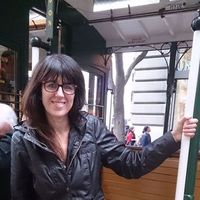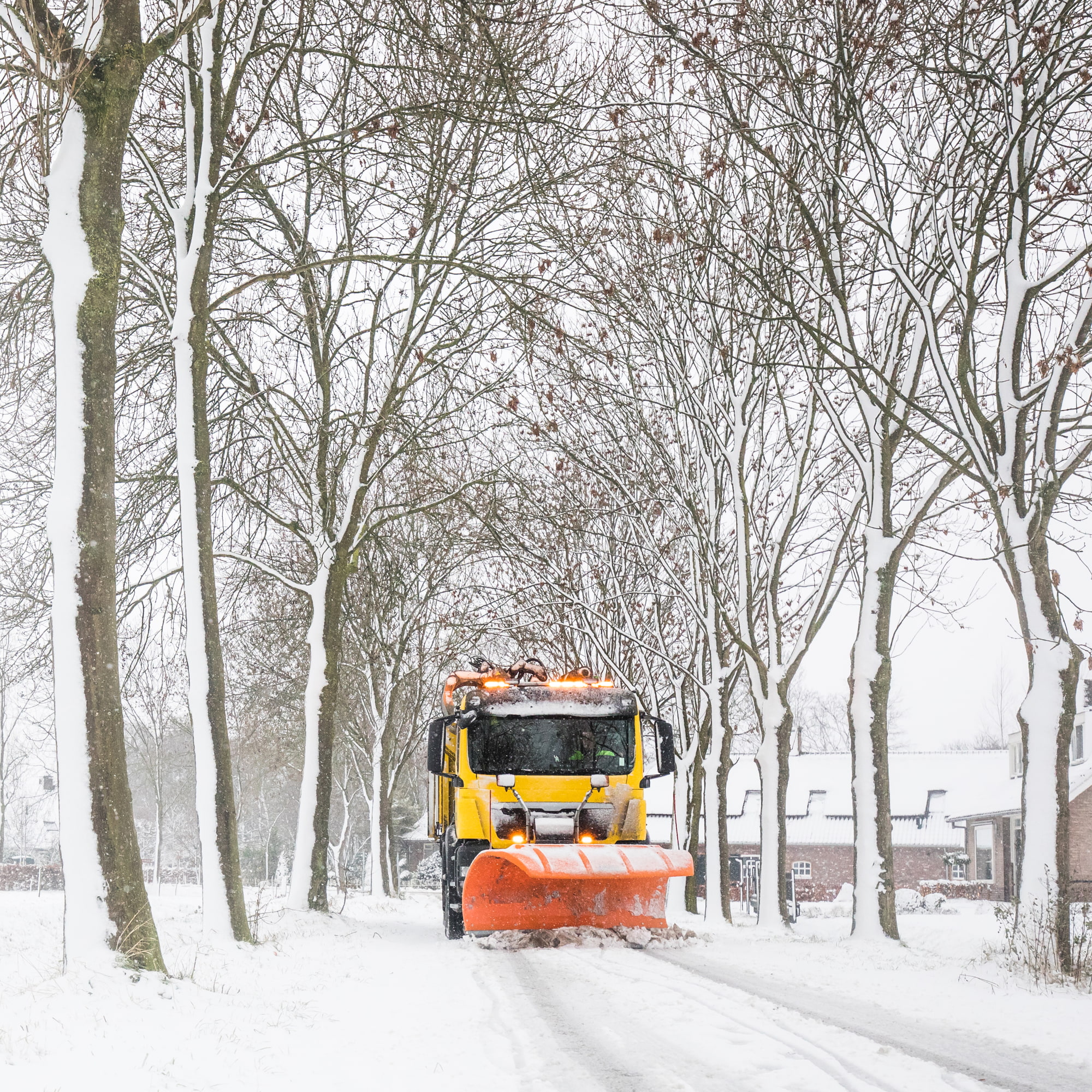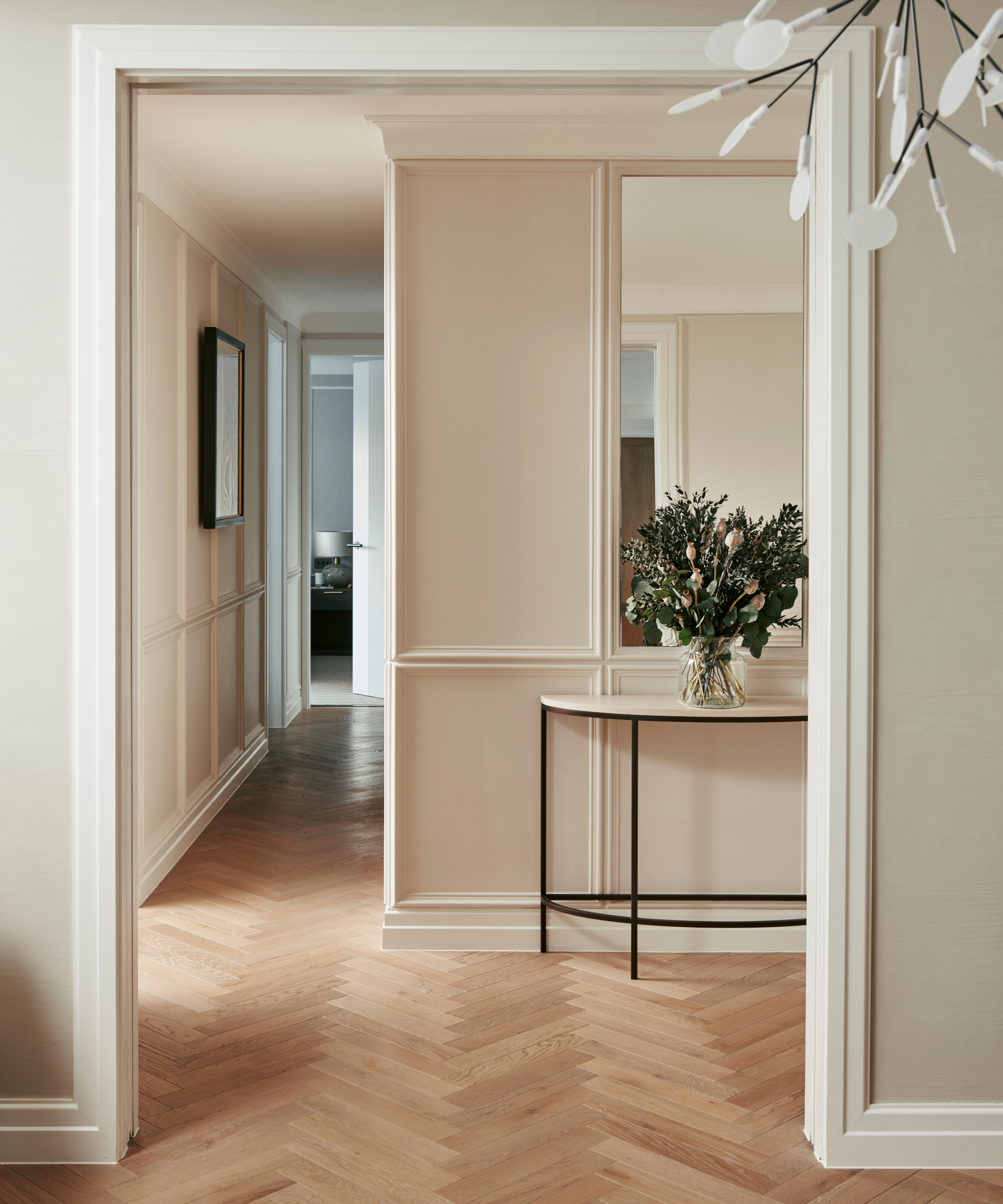How to clean salt residue off floors – clever tricks for every floor type
Don’t let products designed to melt ice wreck your carpets, tiles, or wood flooring – follow our tips for removing it quickly and easily


When the winter frost hits hard and turns roads into ice rinks, the salt spreaders can come out in force. But while spreading road salt will stop skids and slips on streets, sidewalks and pathways, it can be a real hazard to flooring if it isn’t cleaned up quickly when you walk it indoors.
However, you can’t just grab a conventional cleaner to mop up the gritty mess. Salt's high pH means that using cleaning supplies designed to work on dirt and grime, which have a low pH, can actually make it worse – leaving a more concentrated sticky residue or even dissolving the finish on your floor.
We have some top cleaning tips that will help you remove the salt and grit safely, without needing to call in the professionals and leave your surfaces scratch-free and sparkling clean.
How to clean salt residue off floors
Don’t let products designed to melt ice wreck your carpets, tiles, or wood flooring – follow our tips for removing it quickly and easily.

Why do we throw salt down on ice?
The salt works by lowering the freezing point of water, which is 32 degrees Fahrenheit. As the salt dissolves, it forms into Ions that push the water molecules apart, making it harder for them to bond together and form ice. So even when the temp drops below freezing, water that’s been sprinkled with salt will remain liquid. And it happens with any salt – even table, kosher or sea salt.
How does it damage flooring?
Rock salt or road salt is 90 percent sodium chloride crystals. It is white or colorless, so it will blend in with any snow or frost surrounding it. Rock salt can be mixed with sharp sand to make it grittier and spread further. It also stains it brown, and when the ice thaws and the salt melts away, it leaves a sandy residue.
When you walk the road salt into your home, it can leave tiny scratches on wooden floors and cut through its finish, leaving it looking dull. Laminate flooring and mudroom tiles are more resilient but can still get scratched and discolored over time and covered in white residue.
Design expertise in your inbox – from inspiring decorating ideas and beautiful celebrity homes to practical gardening advice and shopping round-ups.
In carpets or rugs, the salt can stain and leave oily deposits. If it isn’t cleaned off the carpet, eventually, the fibers will break down.
If you have concrete flooring in your garage, the corrosive chemicals in the road salt and slush that drop off tires or boots can seep into it and cause it to crack and break if it’s not swept up quickly.
How to leave salt at the door

David Chapman, owner of Ultimate Mats, says the way to prevent ice-melting salt and grit from causing long-term damage to flooring starts at the doorstep:
‘Invest in a doormat; they are particularly effective and are a low-effort way of ridding shoes of chemical particles and avoiding them damaging your flooring and carpets. This will also save you plenty of time and energy spent cleaning up the salt and grit particles.'
‘As soon as you notice ice salt or grit around the home, you need to act fast before any stains to the floor occur. Vacuum the area to remove as many loose particles as possible. Alternatively, you can get rid of loose grit and salt by dry mopping or using a sweeping brush on hard flooring.’

In 2005, David and his son set up Ultimate Mats to provide customers with high-quality mats at reasonable prices. Today, they provide anti-fatigue mats, entry mats, and custom logo mats, all made with the finest materials from top mat manufacturers and suppliers in the United States
Interior expert and owner of Woodstove Fireplace Glass, Mike Monaghan, also recommends taking preventative measures at the front door:
‘Placing rubber doormats inside and outside your home can significantly reduce the amount of salt and grit brought indoors,’ he says. ‘Washable throw rugs at entryways and high-traffic areas can also provide an extra layer of protection and are easy to toss in the wash.'
Consider placing trays or boot scrapers near external doors to collect excess snow and moisture from shoes and encourage house guests to wipe their shoes thoroughly before entering. This rubber boot scraper from QVC is a practical choice.

Mike Monaghan is the Owner of Woodstove Fireplace Glass. This family-owned and operated business are experts in all things heat-resistant glass. They have the largest catalog of wood, pellet, and coal stove glass and can custom-cut ceramic glass to fit even the oldest antique stoves.
How to clean salt off floors

If someone in your household has stepped salt into your home, don't panic. There are simple DIY solutions to combat staining and residue. You will need:
- A vacuum
- A soft brush (try this Siga Dustpan & Brush Set from Walmart)
- A microfiber cloth
- White vinegar (we like this white vinegar from Target)
- Warm water
- Dish soap
How to clean salt off carpets, laminate and tile
Sweep up the grit using a soft-bristle broom or a vacuum cleaner with a hard floor setting that won’t scratch hardwood or tile surfaces.
Stains can be removed with a DIY cleaning solution:
Mix one part white vinegar to three parts warm water in a container. Use a spray bottle to apply to stains on laminate or tile or a microfiber cloth to dab it onto the carpet, taking care not to scrub the area.
Leave the solution on for 10-15 minutes to dissolve the salt, then blot it or mop it off with clean water.
Dry your floor thoroughly with a microfiber cloth or towel (in winter, carpets that are left damp can grow moldy).
If there is a big build-up of salt or residue, add two tablespoons of liquid dish soap – like Method Liquid Dish Soap from Amazon – to the solution for a deeper clean.
How to clean salt off hardwood flooring
Avoid using vinegar on unsealed wood flooring as it will absorb the acidity of the liquid, which can cause the wood to swell and crack. Instead, use a solution made of water and dish soap.
Alternatively, you can buy a specialist cleaner like Basic Coatings Squeaky Concentrate, which is designed for use on hardwood floors.
How to clean salt off concrete flooring
Mix a mild detergent, like liquid dish soap, with warm water and apply with a mop or soft cloth to concrete and stone flooring. Rinse and dry off.
Don’t use harsh chemicals or abrasive tools on polished concrete flooring, as they can harm the surface finish.
Equipped with this new DIY knowledge, you should be able to prevent salt residue from ruining your floors. When in doubt, learning how to winterize your home is the best way to combat damage caused by freezing weather.

Alison is a contributing gardens writer for Homes & Gardens, writing on a range of topics from plant care to garden design. She has recently landscaped the outside space of her Victorian home, replacing crazy paving and cracked slabs with new lawn, and is currently cultivating a fruit bed.